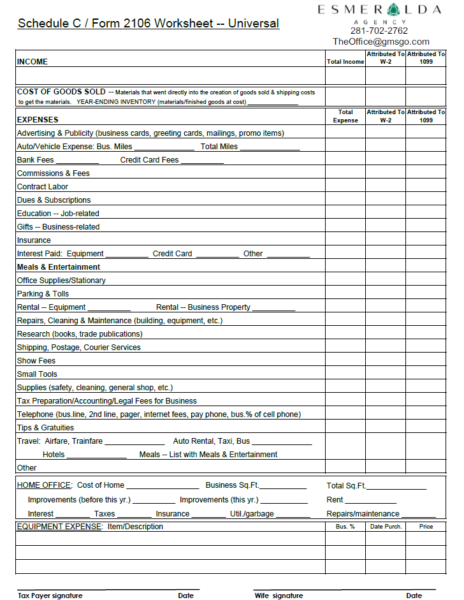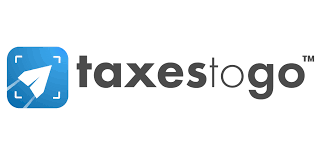For many Americans, tax season brings a mix of obligations and uncertainties. Sure, we all know filing taxes is mandatory, but how many of us truly understand the process?
Picture this: you’ve just handed over a stack of paperwork to your tax preparer without really knowing what magic they perform behind the scenes. Well, it’s time to demystify that process.
Welcome to Individual Tax Return 101!
Before we dive in, why not grab a cup of tea or coffee? Comfortable? Great, let’s start with the basics. Do you have all your documents at the ready? And I mean, really ready. Beyond the staple W-2 and 1099-NEC forms, your life’s events play a starring role in your tax narrative. Are you single, married, or perhaps navigating the complexities of a recent divorce? How many dependents are under your wing? Got any investments, stocks, or generous charitable contributions? Or maybe you’ve hit the books again and have some educational expenses to report. Yes, the list feels endless, and yes, the IRS wants to know every single detail—pronto. But fear not! We’re here to guide you through the entire process, step by step. Ready to get your documents in order? Let’s embark on this journey together, transforming you from a tax filing novice to a savvy preparer who knows the ins and outs of the system.
Personal Information:
- Driver’s license or state ID for identity verification purposes.
- Social Security numbers (SSN) for you, your spouse, and any dependents.
- Dates of birth for you, your spouse, and dependents.
Income Information:
- W-2 forms for you and your spouse.
- 1099 forms for independent contracting work, interest (1099-INT), dividends (1099-DIV), retirement distributions (1099-R), etc. (keep track of your deductions)
- Income from rental properties, sales of property, or other investments.
- Unemployment income (Form 1099-G).
- Social Security benefits (SSA-1099) or Railroad Retirement (RRB-1099).
Deductions and Credits:
- Mortgage interest statements (Form 1098).
- Real estate and personal property tax records.
- Receipts for charitable donations.
- Education expenses (Form 1098-T for tuition paid, student loan interest statement).
- Childcare expenses: provider’s name, address, tax ID, and amount paid.
Investments:
- Statements regarding investments (stocks, bonds, mutual funds, etc.).
- Records of buying or selling assets.
Taxes Paid:
- State and local income tax paid.
- Estimated tax payments made during the year.
- Records of Contributions to Retirement Accounts:
- Contributions to IRAs or other retirement plans
Health Insurance:
- Forms 1095-A, B, or C, Affordable Health Care Statements.
- Records of health savings account (HSA) contributions.
Prior Year Tax Return:
- Having last year’s tax return can help you remember all sources of income and deductions.
Alright, let’s circle back to your personal details for a sec. Pondering over how you’ll be filing your taxes? Or, hold on, maybe you’re scratching your head wondering, ‘Wait, how should I be filing?’ No worries! It boils down to just five options: Single, Married Filing Jointly, Married Filing Separately, Head of Household, and Qualifying Widow(er). Let’s break it down a notch:
- Single: You’re unmarried, divorced or legally separated according to state law on December 31st of the tax filing year.
- Married Filing Jointly (MFJ): You’re married and decide to file a joint tax return with your spouse. You can also file jointly if your spouse died during the tax year. (Note: Your spouse is not your dependent)
- Married Filing Separately (MFS): You’re married but decide to file separate tax returns. This may benefit you if it results in less tax owed than filing a joint return.
- Head of Household (HoH): You must be unmarried or considered unmarried on the last day of the tax year, have paid more than half the cost of keeping up a home for the year, and have a qualifying person (like a child or parent) living with you for more than half the year.
- Qualifying Widow(er) with Dependent Child: You can use this status for two years following the year your spouse died, provided you have a dependent child and you don’t remarry.
Wrapping your head around the best way to file? It all starts with a quick look at your ring finger as of December 31st. Yep, your marital status on that day dictates your tax journey for the year. Tied the knot? You might save more by filing together with your better half, but it’s not a one-size-fits-all. Sometimes, going solo on your tax return, even when married, is the smarter move, especially if you or your spouse have had a year of hefty medical bills or you’re aiming to keep your financial issues separate.
Flying solo or head of your household? The Head of Household status could snag you some sweet tax perks, offering more wiggle room with deductions and softer tax rates than if you file as Single or Married Filing Separately. And for those navigating the tricky waters of separation, remember, your filing status might still be tied together unless you can claim Head of Household. So, let’s crunch some numbers and find your perfect tax-filing match!
Feeling a bit lost in the tax maze? Don’t sweat it—the IRS has your back with some nifty online tools. Their interactive tax assistant is like your personal tax navigator, asking easy-peasy questions about your life to pinpoint the perfect filing status for you. It’s like having a tax genie at your fingertips!
But hey, if your tax situation has more twists and turns than a mystery novel (think divorce drama, separation sagas, or a minivan’s worth of dependents), it might be time to tag in a pro. A tax guru can dive into the nitty-gritty of your unique story, offering tailor-made advice to ensure you’re not just picking a filing status out of a hat but making a choice that’s as savvy as you are.
Next up on your tax prep adventure: deductions, the treasure trove of tax filing! If you’re the entrepreneurial type or your office is wherever you plant your laptop, you’re in for some potentially juicy tax breaks. The secret sauce? Keeping meticulous records of your expenses. Whether it’s that new laptop that keeps your business buzzing or the miles you’ve traveled to meet clients, each expense could be your golden ticket to lowering your tax bill. Just remember, the IRS loves paperwork as much as you love savings, so make sure you’ve got receipts, invoices, and logs to back up your claims. Ready to dive into what might just be your new favorite topic? Let’s uncover the deductions that could make your entrepreneurial spirit do a happy dance!
Feeling intrigued? Let’s zoom in on some deductions that could be music to your ears:
- Home Office Deduction: Carved out a corner of your abode for business? That space might just shrink your tax bill. Expenses for your home office, like a portion of your rent or utilities, can often be deducted, but remember—the space must be used exclusively for business.
- Supplies and Equipment: From paper clips to printers, if you’ve bought it for your business, keep those receipts. These necessary purchases could dial down your taxable income.
- Travel and Mileage: Hitting the road for work? Those miles are more than just a journey; they’re potential deductions. Business travel and vehicle expenses can lighten your tax load, so track those trips!
- Self-Employment Tax Deduction: Flying solo comes with its perks, including deducting half of your self-employment tax. It’s like giving yourself a high-five for handling both employee and employer tax contributions.
You can use our Form to add your deductions in future returns!

Charting Beyond the Entrepreneurial Waters
But why stop there? Your tax savings have more to uncover. Beyond the realm of self-employment, your financial moves throughout the year—like saving for retirement or managing health expenses—can also lead to tax advantages.
- Retirement Contributions: Contributions to your IRA or 401(k) aren’t just wise moves for your future; they can reduce your taxable income now. It’s like paying your future self and getting a tax break today.
- Health Savings and Flexible Spending Accounts: Money tucked away in an HSA or FSA isn’t just for medical bills; it’s also a tax-efficient tool. These contributions can lower your taxable income, making every doctor’s visit or prescription a bit easier on your wallet.
Navigating the Academic Seas
And if you’ve been hitting the books or paying off those student loans, there’s good news for you, too:
- Student Loan Interest Deduction: Paying interest on student loans? Up to $2,500 of that interest might not just disappear into the abyss; it could reduce your taxable income.
- Education Credits: While the tuition and fees deduction has sailed into the sunset, the American Opportunity Tax Credit and the Lifetime Learning Credit offer valuable benefits. These credits can cover a portion of tuition and related expenses, making your educational journey a bit more tax-friendly.
Here’s a checklist you can use:
- Social Security Numbers for you, your spouse, and dependents
- Dates of birth for all parties
- W-2 forms from all employers
- 1099 forms for independent contractors and other income
- Mortgage interest statements (Form 1098) and property tax statements
- Charitable donation receipts
- Education expenses (Form 1098-T) and childcare expenses receipts
- Investment sale or purchase records
- Affordable Health Care Statements (Forms 1095-A, B, or C)
- Previous Year’s Tax Return
Set Sail with Confidence
With these insights, you’re not just drifting along the tax currents; you’re steering towards a horizon of savings. Whether you’re self-employed, saving for retirement, managing health expenses, or investing in education, there are numerous ways to align your financial decisions with tax-saving opportunities. Keep updated with the new tax laws, they are constantly changing, and get in touch with a Tax Pro(Our information has been provided). Let these strategies be your North Star, guiding you to a more financially savvy tomorrow.
To wrap up, navigating the tax filing process doesn’t have to be a daunting journey. With the right preparation, knowledge, and mindset, you can confidently tackle your taxes and possibly even uncover savings you didn’t know existed. Remember, the key to a stress-free tax season is staying organized, understanding your obligations and opportunities, and seeking professional advice when needed. Start your tax-filing early and get quotes, not just because you have to but because it will better help you understand your taxes, you’ll learn to be successful and prevent yourself from having negative returns. So, take the helm with the insights from this guide, and set sail towards a successful and rewarding tax filing experience. For a reliable source of tax filing download our tax app, secure, easy, and free. Give yourself a quote and call us for better assistance. Here’s to making your next tax season the smoothest one yet!



